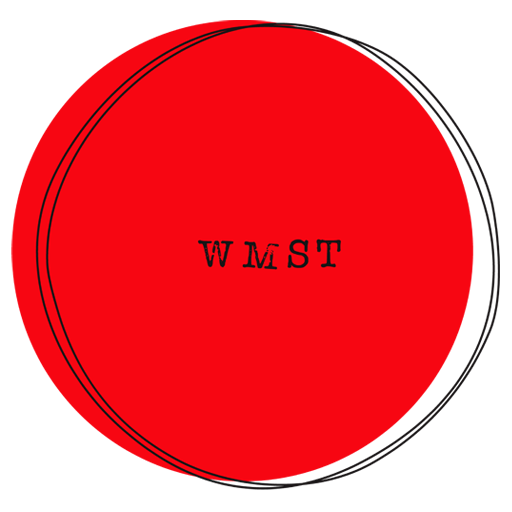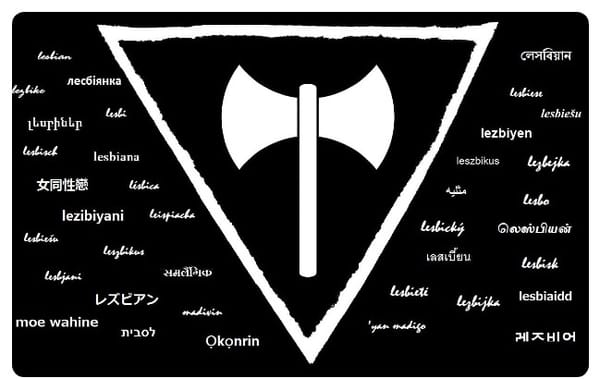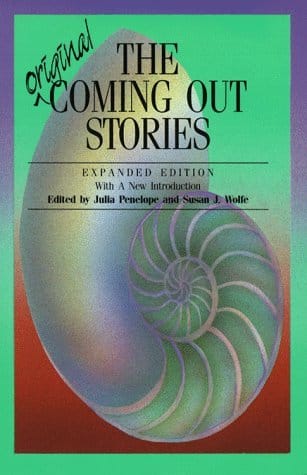For a list of Sapphic Circle meeting dates this fall, please click here.
We meet on specified Sundays at 12-1:30pm PT/3-4:30pm ET/7-8:30pm UTC.
Sapphic Circle is a space for lesbians to come together for thoughtful discussions on a variety of topics. We seek to build lesbian community through engaging in lesbian ideas, politics, media, and more!
This week, we will be exploring what "lesbian culture" means both in the literal sense of the term and, historically, in lesbian consciousness and experience. Once we establish an understanding of that, we will begin to ask ourselves questions about where we see lesbian culture today, and what it means to us.

Pining It Down
In Ann Ferguson's 1990 essay, "Is There a Lesbian Culture?", from Lesbian Philosophies and Cultures, edited by Jeffner Alan, she begins by asking some big questions about if lesbian identity naturally produces a distinct and unified lesbian culture.
What is lesbianism? Is it a universal, crosscultural concept and identity or is it historically specific to that period of world history in which industrial societies develop? Do lesbians have a culture that cuts across the cultures of race, class and society? If so, is it co-extensive with women's culture? If not, how does it differ? Is being a lesbian like being Jewish or Afro-American? That is, is it like an ethnic identity: a social aspect of self that is deeper than a mere "preference" which can be changed by individual whim? Or, are homosexual desires a part of every human Unconscious even though repressed by the majority? Finally, is it plausible to argue that being a lesbian is a political act: an act of resistance to patriarchy? If so, how is it related to feminism? (Ferguson, 1990, p. 73).
She goes on for many pages teasing out the potential answers to these questions and the barriers that prevent her from drawing many satisfactory resolutions. In her conclusion, Ferguson remarks on the complexity of what lesbians sense their culture is, what we wish it could be, and what are the boundaries we face in expanding or creating it. In her resistance to oversimplification, it seems that the answer is that there are many unique lesbian cultures and subcultures, that can be connected or disconnected, and don't result in one unified culture.
In this paper I have distinguished two senses of culture: an objectivist and an identity sense. Both of these senses, employed by continuity and discontinuity approaches to lesbian history, involve theoretical and political problems. Instead I have defended a historical and dialectical approach to thinking of lesbian cultures as potential cultures of resistance within historically specific patriarchal cultures. I have maintained not only that no international lesbian culture exists, but that the goal of lesbian-feminists who seek to promote an international sisterhood opposing compulsory heterosexuality and patriarchy should be, not to construct such a culture, but to work instead for the creation of an international lesbian movement which is culturally pluralist in its approach to defending lesbian subcultures (Ferguson, 1990, p.88).
Read the essay in full, here, if you wish:
Subcultures
From the 1970s onward, many distinct demographics of lesbians started recording their own cultures, in published books and periodicals. I have tired my best here, to compile a short list that gives us a glimpse into these different lesbian subcultures.
Dykes & Gorgons: dyke-feminist newspaper, Vol 1, Issue 1 - May-June 1973

Lesbian Perspective: Lesbian Organization of Toronto - August 1979

Nice Jewish Girls: A Lesbian Anthology, edited by Evelyn Torton Beck (1982)

Out of the Class Closet: Lesbians Speak, edited by Julia Penelope (1994)
A quote from, "A Very Moving Story" by Alien Nation
It's dark, the only light is from the winda on the back porch. The water runnin' fast, splashin' us as it hits the white porcelain, whirlin' away down the drain. We are gigglin' together in amazement that we are gonna have runnin' water in our new house in town! I am four, he is twelve. It's 1964 in rural Missouri (p. 105).
Restricted Access: Lesbians on Disability, edited by Victoria Brownworth and Susan Raffo (1999)
A quote from, "The Madwoman of Off Our Back" by Carol Anne Douglas
I knew that lesbians had been abused in psychiatric wards. In the seventies, my first lesbian lover told me she had been given electric shocks at the sight of pictures of naked women by a doctor trying to force her to be straight. My friends didn’t believe that she was telling the truth, but I did (and still do) (p. 95).
Common Ground
If lesbian culture is really a matrix of subcultures, where do they connect? What holds us together? From what we've read so far, there are a few certainties. First, that whenever lesbians come together, there is always a possibility of creating culture.
Second, we know for sure that the the tools and skills to build and contribute to culture; language, art, music, observation, analysis, etc., are present in every group of lesbians. When we come together consistently, culture creation becomes almost a certainty.
How does a culture form? By accretion: the building up, over time, of new forms from an existing base. The way a shore line is formed, filled in by slit tricking down from mountains rivers, mixing in with sand. The way shelled creatures build fantastic geometrical homes from their own substance, molded and licked into place. Lesbian culture is slit and a lick. A natural building up in the midst of sometimes violent upheaval (Dykewomon, 1993).

The last thing we know for sure is that there will never be a consensus on where the boundaries of lesbian culture lie. As long as we record our experiences, there will be some lesbians who point at it in recognition and others who point at it in confusion. All we're left to do it learn about culture beyond our own, and contribute where we can.
When we wrote to Lesbians seeking their ideas about what Lesbian culture might be, we tentatively defined it as the collected practices and artifacts which Lesbians recognize as Lesbian, and which therefore both arise from and help to define our commonalities. We listed several categories into which we thought these artifacts might be grouped: dress, food and eating, music, literature, spirituality, sports, dwellings, relationships, sensuality/sexuality, and theory. We also made the arbitrary decision to create an anthology selecting our artifacts, including our art works, rather than one focusing on theoretical essays about Lesbian culture. We wanted to show, not tell, what lesbian culture is...
While there were differences among the definitions Lesbians sent us, four general ideas emerged. First, many wished to define Lesbian culture broadly, to include everything Lesbians do. Second, others narrowed the scope of the term "Lesbian culture" so that only activities formed by a Lesbian sensibility, one reflecting Lesbians priorities, would "count" as Lesbian culture. Third, some focused on the fact that Lesbian culture is a culture under siege, one in which we set ourselves apart from males and from heteropatriarchal culture and one which is, as a consequence, continually threatened by them. Finally, many emphasized the importance of maintaining a uniquely Lesbian perspective, grounded in Lesbian identity, within whatever we might identify as a Lesbian culture (Penelope & Wolfe, 1993).
Questions To Consider
- What do you think of trying to pin down a universal, cross-cultural definition of "lesbian culture"?
- What lesbian culture or subcultures do you think you belong to? In what ways does that manifest itself?
- Where do you engage in lesbian culture?
- What opportunities have you had to contribute to your local lesbian culture?
- What do you think is the easiest way for newcomers to access lesbian culture?
- What lesbian stereotypes or lesbian mythology do you think are commonly recognized and true? Which are untrue?
- What lesbian slang are you familiar with? Where did you learn it?
- Is there any art or language that you think symbolize lesbianism in a widely recognized way? How about art or language that symbolizes lesbianism in a niche?
References
Ferguson, A. (1990). Is there a lesbian culture? In J. Allen (Ed.), Lesbian philosophies and cultures (pp. 73–88). State University of New York Press.
Gutter Dykes Collective. (1973, May–June). Over the walls. Dykes & Gorgons, 1(1), 2.
Montreal during the Fête Ste-Jeanne Baptiste. (1979, August). Lesbian Perspective, 4, 6.
Alien Nation. (1994). A very moving story. In J. Penelope (Ed.), Out of the class closet: Lesbians speak (pp. 105–123). The Crossing Press.
JEB. (1982). That’s funny, you don’t look like a Jewish lesbian. In E. T. Beck (Ed.), Nice Jewish girls: A lesbian anthology (pp. 122–129). Persephone Press.
Douglas, C. A. (1999). The madwoman of Off Our Backs. In V. A. Brownworth & S. Raffo (Eds.), Restricted access: Lesbians on disability (pp. 90–108). Seal Press.
Penelope, J., & Wolfe, S. J. (Eds.). (1993). Lesbian culture: An anthology: The lives, work, ideas, art and visions of lesbians past and present. The Crossing Press.
FAQs & Code of Participation
If you have questions, please read over Sapphic Circle's Frequently Asked Questions and review our Feminist Code Of Participation.





